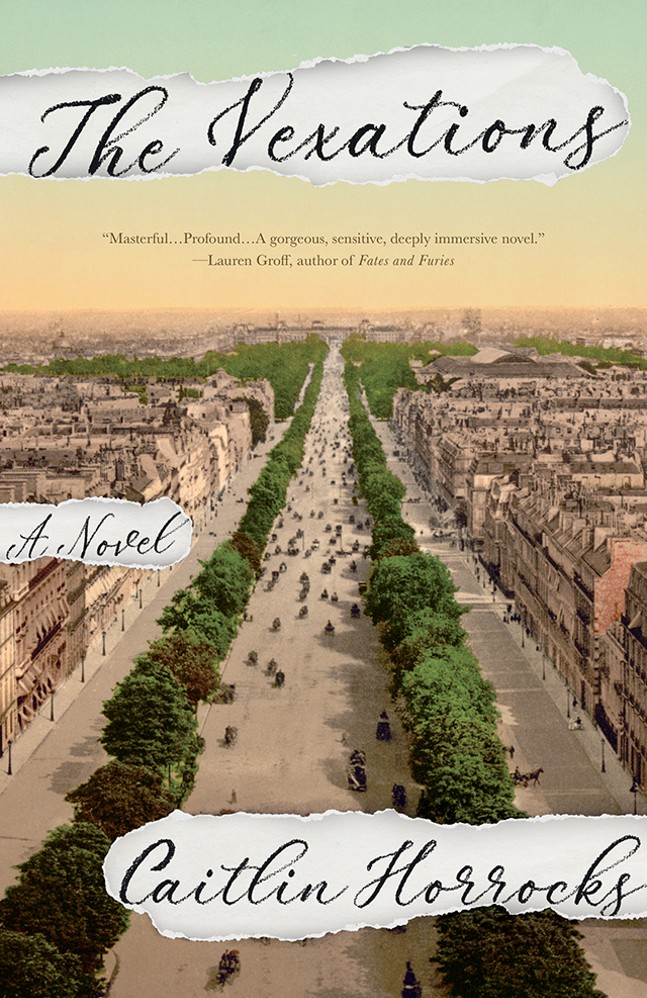Ask ten random people if they’ve heard of Erik Satie, and maybe one will say yes. But the majority of us have heard the French composer’s music. Notably, Satie’s Gymnopedie No. 1 has been featured in films such as Fahrenheit 451 and Green Book, and television shows including The Blacklist, Doctor Who, and How I Met Your Mother.
“He’s very obscure in the U.S.,” says Caitlin Horrocks, author of The Vexations (Little, Brown), a novel in which the Michigan-based writer imagines the life of Satie. “Nine out of ten Americans might not know the name, but that one out of ten sees him as a cult figure. A lot of people have an affinity for him.”
Horrocks will appear April 11 at Frick Fine Arts Auditorium as a guest of the Alexandra L. Rowan Foundation.
Horrocks is an accomplished short-story writer who has published works in numerous publications including The Paris Review and The New Yorker, but The Vexations is her first novel. The enormity the project became apparent during a trip to France for research.
“I hadn’t quite realized how much a national hero [Satie] is there,” Horrocks says. “It was very sobering. I was made to feel kind of like, who are you to write this book.”
In many ways, Horrocks is the perfect writer to attempt a novel about Satie. She studied piano as a child and was familiar with the composer’s work. “As a piano student, I found his catalog so odd, all these miniatures and fragments and jokes,” she says. And in Horrocks’ short stories, she exhibits a keen sense of character and place, invaluable assets for any writer, but especially for one attempting to flesh out a novel with historical facts.
After reading numerous biographies about Satie, Horrocks realized an important element was missing: A rendition of daily life in Paris during the late 19th century. Once that color was infused in the story, the author knew she had further fleshed out the story. She found an alternate viewpoint in Phillippe, a character based on Jose Maria Patricio Contamine de Latour, a Spanish poet who collaborated with Satie.
But the heart of the story emerged with the inclusion of Satie’s sister, Louise. At first, Horrocks found only footnotes about Louise Satie: After marrying a doctor, Satie’s sister lost custody of her child to in-laws and eventually emigrated to Argentina, where she taught piano.
Then came an unexpected gift: an Argentinian radio documentary about Louise, including interviews with her former students that unearthed biographical facts about the character Horrocks used in the novel.
The birth of Horrocks’ own child during the writing of The Vexations also enabled the author to view Louise in a new light. “She initially struck me as more quirky than tragic,” Horrocks says. “... But after having a child, I realized this is not quirky, this is not strange, there’s a story there.”
Satie’s life put him in close proximity to many of the leading creative types in Paris. There’s a wonderful scene in a theater with Sergei Diaghilev, founder of the Ballet Russes, and the playwright and filmmaker Jean Cocteau, in which Satie expresses his indignation about being physically crowded by his peers. This might seem like a remarkable confluence of talents, but for Satie, who also counted Claude
Satie sought and achieved a fair amount of success and acclaim during his lifetime. But he wrestled with his accomplishments and questioned his good fortune.
“When he had money, he would immediately spend it,” Horrocks says. “When he had
Between the Lines
The Glass City Poetry Collective, curated by poet and musician Scott Silsbe, will feature four local poets in its next event on April 12. Kristopher Collins, Kurt Garrison, Richard Gegick, and Bob Pajich will read at the collective’s venue in Jeannette. Acoustic music provided, BYOB, and free, although donations will be accepted.
406 Clay Ave., Jeannette. 724-578-3332



